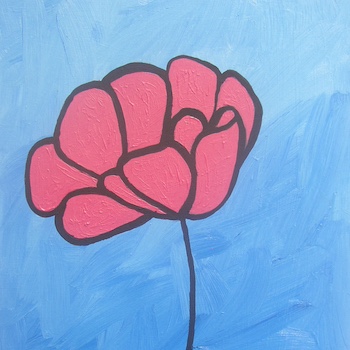What is Art Therapy? - March 19, 2024
 Art therapy is an integrative mental health field and form of expressive therapy that uses the creative process of making art to improve a person's physical, mental, and emotional well-being. It is based on the idea that the act of creating art can be therapeutic, helping individuals to explore their feelings, reconcile emotional conflicts, develop self-awareness, manage behavior and addictions, reduce anxiety, and increase self-esteem.
Art therapy is an integrative mental health field and form of expressive therapy that uses the creative process of making art to improve a person's physical, mental, and emotional well-being. It is based on the idea that the act of creating art can be therapeutic, helping individuals to explore their feelings, reconcile emotional conflicts, develop self-awareness, manage behavior and addictions, reduce anxiety, and increase self-esteem.
In art therapy sessions, a trained art therapist provides guidance and support as individuals engage in various art-making techniques such as drawing, painting, sculpting, collage, or other forms of artistic expression. The focus is not on producing a masterpiece but on the process of creation and the insights that emerge during the creative journey.
Benefits of making art
Research shows that creating art, whether or not you think you’re good at it, reduces stress. The process of making art helps to reduce cortisol, which is the hormone produced when we are under stress. Some stress is good, however it becomes a problem when it is repeated or chronic intense stress - like constant worry. This can lead to cortisol dysregulation, which can lead to:
- Cognitive difficulties - like trouble with memory and learning
- Emotional difficulties - like depression, withdrawal, and anxiety
- And even physical problems like high blood pressure and diabetes.
Creating art helps improve emotional regulation through the accumulation of skill and practice. And creating art activates our brains natural reward system:
- Dopamine boosts drive, focus, and concentration. It enables you to plan ahead and resist impulses so that you can achieve your goals.
- Serotonin stabilizes our mood, feelings of well-being, and happiness
- Oxytocin triggers sensations of pleasure and positive emotions.
Art therapy can be used with people of all ages and backgrounds, including children, adolescents, adults, and the elderly. It is employed in various settings such as schools, hospitals, mental health clinics, rehabilitation centers, and private practice.
Art therapists might work alone or as part of a treatment team alongside traditional forms of therapy to address a wide range of issues, including trauma, grief, depression, stress, PTSD, chronic illness, developmental disabilities, and more.
Art Therapy Training and Credentials
Practicing art therapy requires, in part, a masters degree from a university accredited by the American Art Therapy Association.
“Art therapists are clinicians with master’s-level or higher degrees trained in art and therapy that serve communities in different settings. Guided by ethical standards and scope of practice, their education and supervised training prepares them for culturally proficient work with diverse populations.” (AATA)
Students must also complete a minus of 700 hours of supervised art therapy practicum and clinical internship. Art therapy students must also train in a variety of 2 and 3 dimensional art materials and processes.
After graduation, an art therapist can become a Registered Art Therapist (ATR) after completing “a minimum of 1,500 hours of direct client contact using art therapy” (ATCB). And then take the board exam to become a Board Certified Art Therapist (ATR-BC)
That’s a lot of work! Art therapists dedicate their time and energy to learning the skills required to practice in this integrative mental health field. An art therapist is not simply an artist, we are a trained mental health professional who uses art, and the process of making art, as part of the healing process.
So, if you are considering working with an art therapist, you can be sure that they are well trained!
For more information about art therapy, you can visit the American Art Therapy Association.
Connect with us:
The C.A.R.E. Program team would love to connect with you!
- Register for one of our Caregivers classes
- Join the conversation in our Facebook group
References:
.svg?iar=0&hash=F6049510E33E4E6D8196C26CCC0A64A4)

/hfh-logo-main--white.svg?iar=0&hash=ED491CBFADFB7670FAE94559C98D7798)